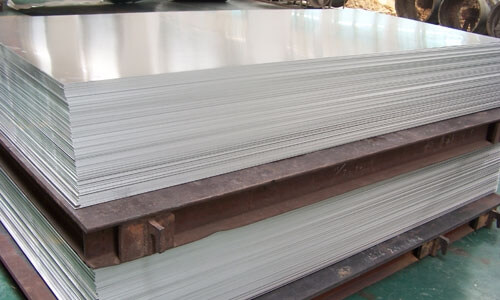- 0531-87887788
来源:http://www.jndclyyxgs.com/ 发布时间:2021-06-10
残余应力是材料在变形过程中或铸件生产过程中的不均衡塑性变形,或是对它们进行机械加工、热处理及焊 接等作业时所引进的。轧制板材时,若轧直径小,则在表层产生压缩残余应力,若轧辊直径大如平整一压光轧制时,则板材表层部分为拉伸应力而在中 心部分为压缩应力。
Residual stress refers to the unbalanced plastic deformation of materials in the process of deformation or casting production, or is introduced when they are machined, heat treated and welded. When rolling the plate, if the rolling diameter is small, the compressive residual stress will appear on the surface. If the roll diameter is large, such as flat calendering rolling, the tensile stress will appear on the surface and the compressive stress will appear on the center.
轧制后板材沿厚度在轧制方向上表层残余着拉应力,内层金属残余着压应力,固溶处理时板材被加热到再结晶温度以上,轧制过程中所形成的残余内应力得以消除。
After rolling, the residual tensile stress in the surface layer and the residual compressive stress in the inner layer along the rolling direction of the thickness of the plate. During solution treatment, the plate is heated above the recrystallization temperature, and the residual internal stress formed in the rolling process is eliminated.

将加热后的板材快速放入冷水槽中或喷水淬火,此时由于表面金属冷 却得比内层的快,淬火初期表层金属剧冷、急剧收缩,基于板材的整体性,表层金属产生拉应力,内层金属产生压应力,随着板材的进一步冷 却,使内层金属剧冷、急剧收缩,使应力重新分配,导致表层金属残余压应力内层金属残余拉应力,与其轧制过程残余的内应力分布规律正好相反。
The heated plate is quickly put into a cold water bath or quenched by water spray. At this time, because the surface metal cools faster than the inner layer, the surface metal cools sharply and shrinks sharply at the initial stage of quenching. Based on the integrity of the plate, the surface metal generates tensile stress and the inner metal generates compressive stress. With the further cooling of the plate, the inner metal cools sharply and shrinks sharply, which redistributes the stress, The results show that the residual compressive stress of the surface metal and the residual tensile stress of the inner metal are opposite to the distribution of the residual internal stress in the rolling process.
残余应力大小决定于材料性质、形状及热处理条件等。就材料性质来说,在一般情况下,热导率越高、热膨胀系数越小弹性模量越低、高温强度越低,残余应力就越小。
The magnitude of residual stress depends on material properties, shape and heat treatment conditions. In general, the higher the thermal conductivity, the smaller the coefficient of thermal expansion, the lower the modulus of elasticity and the strength at high temperature, the smaller the residual stress.
此外,铸造、焊 接等过程中都会引起残余应力,零件装配不当也会引发残余应力,甚至时效处理也会有残余应力,并引起尺寸的微小变化,在复合材料中由于材料性质的不同,不可避免地存在着残余应力。
In addition, casting, welding and other processes will cause residual stress, improper assembly of parts will also cause residual stress, even aging treatment will also have residual stress, and cause small changes in size. In composite materials, due to different material properties, there are inevitably residual stress.